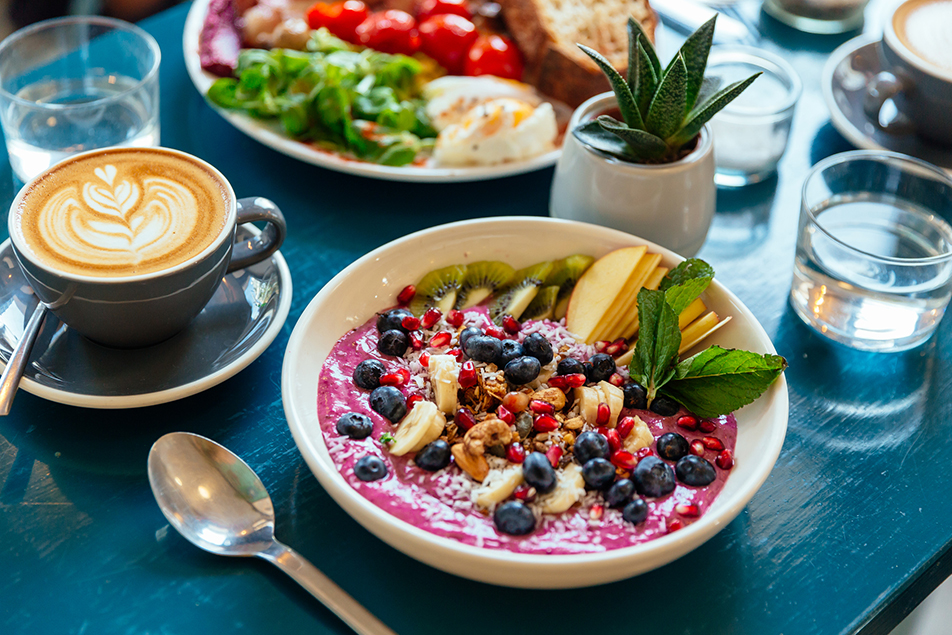
This post was written by Vanessa Mendez, MD, gastroenterologist, Parkview Health.
Diet is one of the most important pillars of a balanced and thriving lifestyle and a whole foods plant-based diet has all of the benefits that make it an optimal approach. This diet is naturally rich in micronutrients such as vitamins and minerals, antioxidants, as well as healthy fats, plant-based protein and unprocessed carbohydrates, making it appropriate at every stage of life. Research shows that whole food plant-based diets and plant-forward diets may prevent diseases such as:
-
Certain types of cancer such as breast, colorectal and prostate
… while also improving many of the diverse aspects of health, including:
-
Digestion and microbiome diversity
-
Blood cholesterol
-
Insulin sensitivity
-
Fertility
-
Weight management
All these benefits, as well as many more, have made the various plant-predominant diets, including vegan, vegetarian and pescatarian, Mediterranean and DASH diets all very popular around the world.
But transitioning to a plant-based diet, especially when you’ve been eating the Standard Western diet, can seem daunting. The truth is, though, that with a little planning, moving to a whole foods plant-based or plant-forward eating style is not difficult at all. Every person is different and a diet that is 100% plant-based may not be feasible for all, however the more plant foods we include in our diet, including legumes, vegetables, fruits, whole grains, nuts and seeds, the bigger the health rewards you will reap.
Getting started
Here are some tips to get you started:
Start gradually
Transiting to a 100% vegan diet is likely too big of a change from one day to the next, but like every other important and big project, the best way to succeed is to break it down into smaller, more achievable goals.
Here are some more ideas to help get you started. Do them in any order, and as quickly or slowly as you tolerate:
- Start by eliminating two animal-based foods and replacing them with a healthier alternative. On your next pasta night, switch out your traditional dairy alfredo sauce for a homemade cashew alfredo! Instead of a meat chili, switch to a completely plant-based bean chili. Or on your next taco night, swap the ground beef for some sautéed tempeh (marinated the same way you would marinate your meat).
- Increase consumption of whichever fruits and vegetables that you love or already have at home. You may add an extra serving of vegetables to your daily plate or add fruit to your breakfast and to smoothies.
- Try new fruits and vegetables that you don’t eat regularly, adding one or two a week.
- Try a few new plant-based foods every week. Perhaps a new grain or legume you have never had before.
- Swap traditional processed meat-based foods such as pizza, pasta, hamburgers, nuggets and sodas for plant-based alternatives. Instead of ordering a pizza, try making one at home with veggies, cashew sauce, or marinara, and adding some vegan cheese. If you were big into these foods, try eliminating one day’s worth of these a week, replacing them with a plant-based and less processed alternative.
- Change your regular peanut butter to a natural option with no added sugars, where the only ingredient is the nut or seed.
- Instead of drinking soda, try drinking infused water (water with slices of natural cucumber, strawberries or blueberries).
- Cook at home more often rather than going to restaurants or start cooking a few meals a week if you haven’t done so before. Fast foods and restaurant foods are often full of salt, oils and added sugars to enhance the flavors and preserve their shelf life; not to mention they can be pricey. If you cook more at home, both your health and your wallet will thank you!
As you make these incremental changes, you will eventually find that you’ve given up many of your old eating habits and replaced them with new and healthier ones.
Stock up on healthy foods
Although people may think otherwise, eating plant-based is actually cheaper than an omnivorous diet. According to a study published in the Journal of Hunger & Environmental Nutrition, vegans tend to save almost $750 a year (as long as you’re keeping away from consuming many highly processed vegan substitutes). Stock up on a variety of vegetables and fruits, whole grains (like brown rice, buckwheat, amaranth, quinoa, and whole wheat sprouted and sourdough breads) and legumes (like chickpeas, lentils, black beans and organic soybeans).
And as you stock up on the good stuff at home, finish off or donate the less healthy products. Not only will it prevent you from consuming them often, it will also keep your pantry from overflowing.
Plan your daily meals in advance (Do meal prep 2 times per week)
Planning your meals and precooking what you can in advance will make your days easier, because instead of cooking after a long day, you´ll only need to assemble your plant-based plate. It’s best to do meal prep during the days that you are less busy and cook whatever will keep best in advance, including legumes, vegetables and whole grains. If you’re inclined, you can also whip up some vegan sauces for pasta a day or two early and freeze them, including the aforementioned cashew alfredo or a tasty vegan Caesar dressing.
And don’t sweat making gourmet meals. You’d be surprised how tasty a bowl filled with a mix of veggies, legumes, grains and a delicious plant-based sauce can be!
Replace animal ingredients with healthy plant-based food
There are tons of healthy and unprocessed replacements for animal products, for example:
Cow’s milk → plant milks such as oat, almond or soy milk (I don’t recommend coconut milk for drinking as it is higher in saturated fat. Use smaller amounts for cooking only.)
Eggs for baking → flax seed egg (mixing flax seeds with a little water)
Scrambled eggs → tofu scramble
Processed salad dressings → dressing with natural ingredients such as seeds and nut butters (tahini, cashews, etc.)
Poultry → legumes, soy products such as organic tofu or tempeh
Dairy yogurt → yogurt made with organic soy or coconut
Cheese → nutritional yeast and cashews to make cream sauces for pastas, ricotta, sour cream, etc. Use store bought vegan cheese alternatives sparingly.
Don’t be afraid of volume when eating plant-based
Plant-based foods are lower in calories and rich in nutrients. Because they are lower in calories, larger volumes of foods are needed to sustain your energy throughout the day. So, you should not feel restricted or limited, eat until you’re satisfied.



